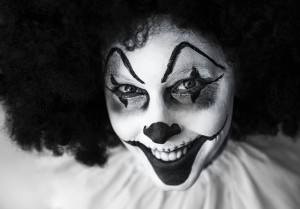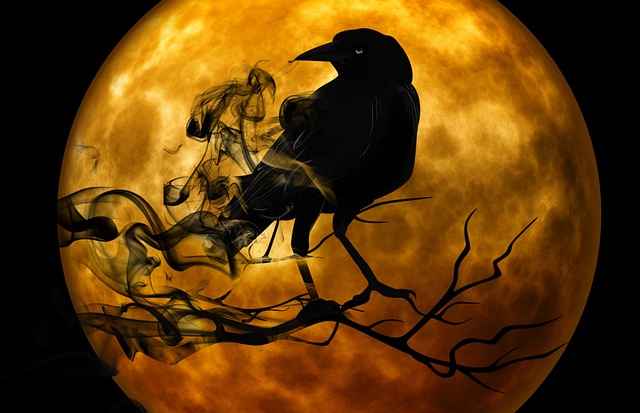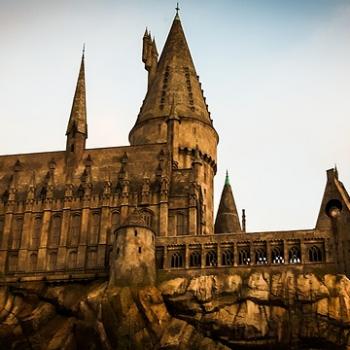Isn’t it high time we rescued Halloween from Spiderman tights and creepy clowns?
No, I’m not a party pooper, and with two youngsters who are all too keen to go trick-or-treating on Monday night, I fully endorse this time-honored tradition with its scary ghouls and innocent merriment. Where I pause is on two counts: does anyone really know, much less understand, the origins of Halloween? And secondly, what are we to make of – and how do we address – the scary clown phenomenon that has made headlines in both the U.S. and Europe?
Celtic Festival of Samhain
Samhain is the Gaelic word for November. It also denotes the time of the year when, with fading summer light and the onset of darker winter days, the ancient Celts of Ireland and Scotland were more keenly aware of the diaphanous veil between this world and the next. Caol Áit or ‘thin place’ is how they referred to this mystical state.
They understood this season of the year as a time when the spirits – both friendly and those still harboring a score to settle with their living relatives – could slip effortlessly in and out of the earth plane. Consequently, homes were opened, lights were left burning, and food left out to welcome the friendly spirits. Alternately, bonfires were lit, and sinister costumes and masks were worn, by those feeling the need to ward off the ‘not so friendly’ spirits.
Let’s Christianize the Pagans . .
Consistent with the pattern of Christianizing what were originally Pagan festivals, like Easter (worship of Estra – the Goddess of Spring – at the March equinox), the burgeoning Church eventually hijacked the Festival of Samhain. The word ‘Halloween’ is derived from the old English, ‘All Hallows even’ or the eve of the holy feast of ‘All Saints,’ historically celebrated on May 13. With the intention of supplanting the Pagan festival of Samhain with something holier, it got moved to November 1.
In fact both holidays (Halloween and the feast of All Saints) were once celebrated on the same day. No wonder we’re still confused!
Point being: when you don your mask this Halloween and light the proverbial Jank-o’-lantern, it doesn’t hurt to give a little nod to the spiritual communion we share with our deceased loved ones, the Celtic origins of this holiday, and the many ways global cultures today celebrate and honor their departed.
As for clowning?
One of the chapters in my upcoming book to be published by Patheos Press, is titled ‘Send in the Clowns.’ Here I extol the virtues of these “jesters of mirth” in our midst, and explore the place of comedy and satire in modern times. It was written over a year ago, and therefore well shy of the recent headlines on creepy clown impostors who have been spooking women and children around the country.
 What’s going on here? Nothing new in some regard. In his book, Bad Clowns Benjamin Radford examines the evolution of the clown persona from harmless court jester to the more menacing image sometimes depicted today.
What’s going on here? Nothing new in some regard. In his book, Bad Clowns Benjamin Radford examines the evolution of the clown persona from harmless court jester to the more menacing image sometimes depicted today.
Foremost in this line-up we have John Wayne Gacy the serial killer who in the 1970’s, appeared at children’s birthday parties as “Pogo the Clown.” When not clowning he was killing and raping young men before burying them in the crawl space of his Chicago home.
Then, invariably, the Hollywood characters followed: Pennywise, the clown from Stephen King’s 1990 movie “It,” the “Killer Klowns from Outer Space” (1988), the clown doll under the bed in “Poltergeist” (1982), the zombie clown in “Zombieland” (2009) and, more recently, the killer clown in “All Hallows’ Eve” (2013).
Is it any wonder then, that a new sinister clown hysteria has hit the headlines? Probably not. The dark collective human unconsciousness has a way of reaping what it sows.
Final note
As responsible citizens and parents in an age of amber alerts, I believe it behooves us to take note of what cultural trends we subscribe to; why we subscribe to them and, most important – what we are teaching our children in the process.
So hang with the little ones as they go trick-or-treating on Monday night; help them to see the fun and neighborly kindness in it all; and where appropriate, give them (and yourself) a simple context out of which a richer meaning can be enjoyed.
Cover Photo: Pixabay
Image Insert: Pixabay













